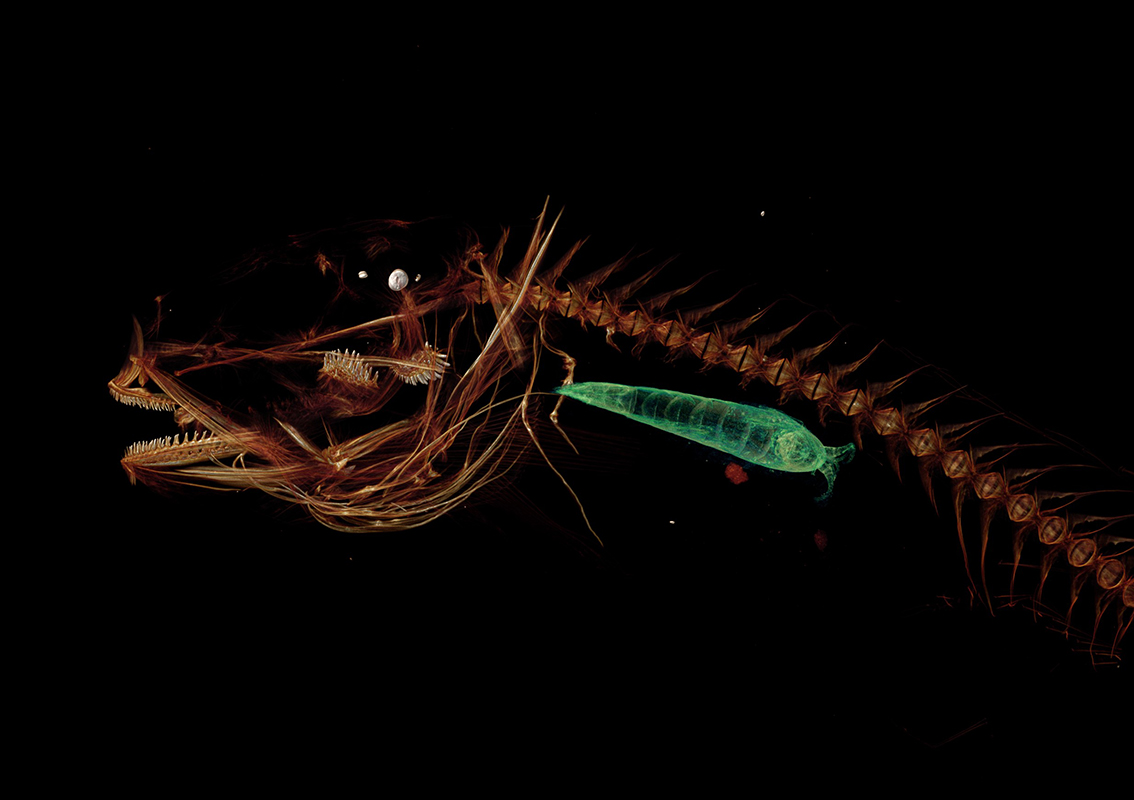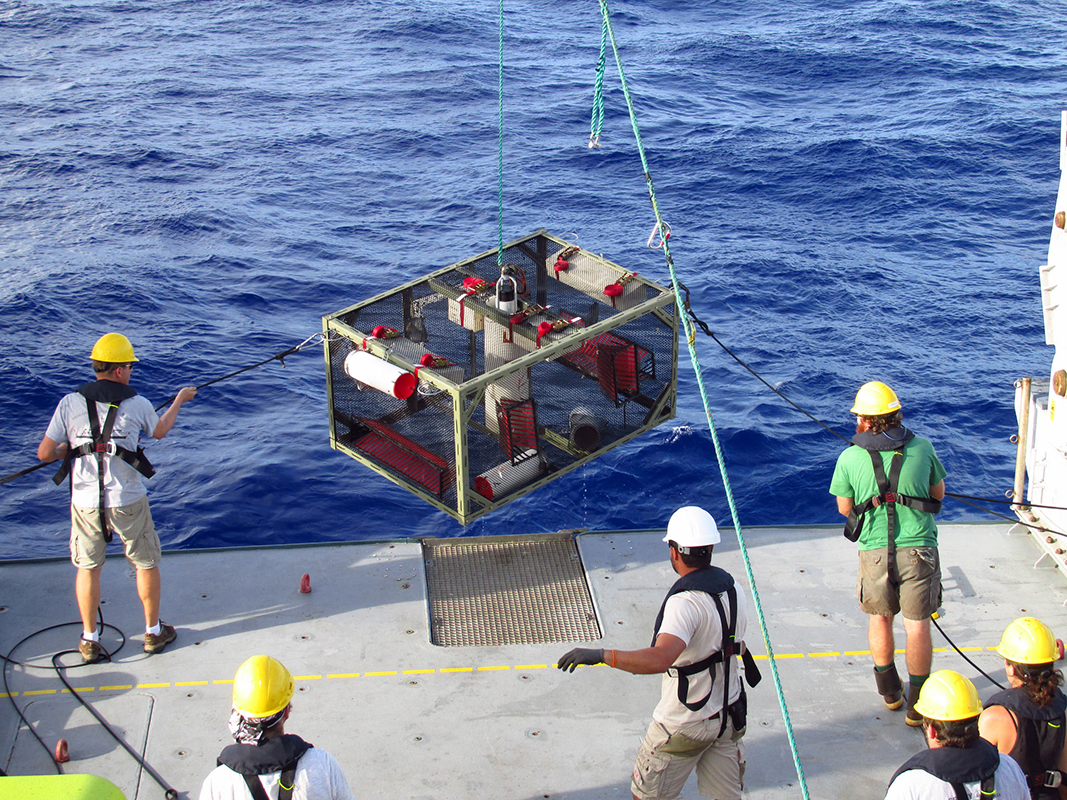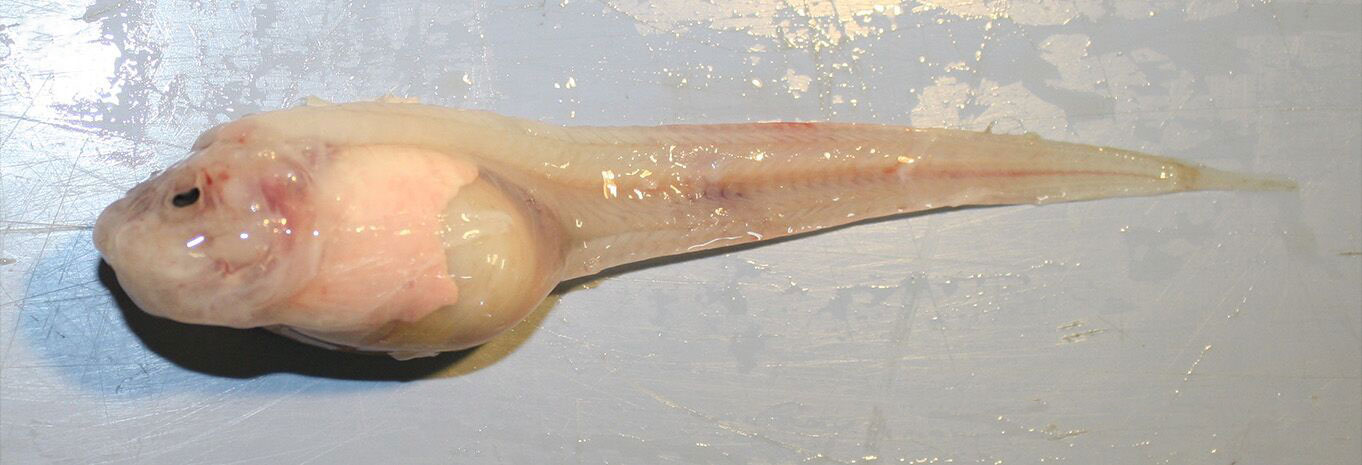Now, That's Deep! Mariana Trench Fish Lives 5 Miles Down

The dark and chilly depths of the ocean's so-called "midnight zone" thousands of feet below the surface are home to numerous species of bizarre-looking and fearsome fish. Many of these creatures have oversized jaws filled with massive teeth.
But a deceptively vulnerable-looking fish is not only right at home in the very deepest ocean environment on Earth — where few creatures can survive — it's also one of the region's top predators.
And now, for the first time, scientists have collected specimens of this unusual creature. Dubbed the Mariana snailfish, it swims in the Mariana Trench near Guam, at a depth of about 26,200 feet (8,000 meters). [Infographic: Tallest Mountain to Deepest Ocean Trench]
The snailfish's small, pink and scaleless body hardly seems capable of surviving in such a punishing environment, but this fish is full of surprises, researchers reported in a new study. The animal appears to dominate in this ecosystem, going deeper than any other fish and exploiting the absence of competitors by gobbling up the plentiful invertebrate prey that inhabit the trench, the study authors wrote.
The fish's scientific name, Pseudoliparis swirei, includes a nod to 19th-century sailor Herbert Swire, who served on the naval expedition that discovered the Mariana Trench in the late 1800s, according to the study.
Under pressure
The Mariana Trench occupies a part of the ocean that is so deep, dark and cold that its name — the "hadal zone" — was taken from "Hades," the Greek underworld, according to the National Oceanic and Atmospheric Administration. This region consists mostly of marine trenches and extends from depths of about 19,685 to 36,089 feet (6,000 to 11,000 m).
In addition to being pitch-black and frigid, that region experiences pressure that's unendurable for many forms of life. At the bottom of the funnel-shaped Mariana Trench, the pressure reaches 15,750 lbs. per square inch; for an unprotected human, that pressure would crush the lungs "to the size of ping-pong balls" and compress every single air pocket in the body "until you were a tightly packed, humanoid-shaped flesh chunk," according to the book "And Then You're Dead: What Really Happens If You Get Swallowed by a Whale, Are Shot from a Cannon or Go Barreling Over Niagara" (Penguin Books, 2017).
Sign up for the Live Science daily newsletter now
Get the world’s most fascinating discoveries delivered straight to your inbox.
Snailfish, however, do just fine under this crushing pressure. There are more than 300 species in the snailfish family, many of which are known to inhabit a range of ocean depths, where they gather in groups to hoover up crustacean meals, according to the Alaska Fisheries Science Center (AFSC). Previously, scientists had collected snailfish at some of these depths, but prior to this study, the creatures had not been observed so deep, the scientists reported. The researchers in the study collected 38 specimens, gathered during expeditions in 2014 and 2017, sampling at depths in the trench from around 22,600 to 26,200 feet (6,900 to 8,000 m).

To shoot video and capture fish in the trench, the scientists dropped free-falling, mackerel-baited traps equipped with cameras, study lead author and marine biologist Mackenzie Gerringer, a postdoctoral researcher at the University of Washington (UW), told Live Science in an email.
"We deploy the lander over the side of the ship, and it sinks down with a steel ballast weight. It can take about 4 hours for the lander to sink all the way to the bottom of the trench!" Gerringer wrote.
"The traps and cameras stay down for about 12 to 24 hours; then we call them back up using an acoustic signal. The lander drops its weight and rises to the surface with its flotation. Then, we need to look for the orange flag floating at the surface and go drive the ship to pick up the lander and see what it found," Gerringer explained.

The snailfish individuals that the researchers collected ranged in length from 3.5 to 9.3 inches (89 to 235 millimeters), though their bodies shrank by about 10 percent during preservation. The bigger fish had more rows of teeth and more teeth per row, the researchers wrote in the study. The snailfishes' eyes were small, and their bodies were pinkish-white, with internal organs and muscles that were visible through the animals' scale-free skin, the scientists reported.
"Completely smitten"
No one had ever brought back a fish from these depths before, so when the scientists saw these snailfish, the researchers suspected they were looking at a new species, Gerringer told Live Science. Closer examination of the fish's body structures and genetics confirmed that it was a species not previously known to science, she said. [Photos: The Freakiest-Looking Fish]
"The discovery of another hadal snailfish, this time in the Mariana Trench, is exciting," Gerringer said. "It tells us that there is indeed something special about this family of fishes, something that allows them to do so well at hadal depths."
Seeing these denizens of the deep ocean at all is exceptionally rare, and being able to handle and examine them up close is downright remarkable, Adam Summers, a professor at UW and the scientist who CT-scanned the snailfish, suggested on Twitter.
"It was really the thrill of a lifetime to hold one in my hand and prepare it for CT scanning. I was completely smitten," he wrote in the tweet.
The discovery of the Mariana snailfish reminds us that even those environments that seem the most inhospitable can support life; they may even harbor unexpectedly robust biodiversity, the study authors concluded.
"The finding of this new species of fish also reminds us to keep exploring," Gerringer wrote in the email. "There is so much more out there to discover."
The findings were published online Nov. 28 in the journal Zootaxa.
Original article on Live Science.

Mindy Weisberger is an editor at Scholastic and a former Live Science channel editor and senior writer. She has reported on general science, covering climate change, paleontology, biology and space. Mindy studied film at Columbia University; prior to Live Science she produced, wrote and directed media for the American Museum of Natural History in New York City. Her videos about dinosaurs, astrophysics, biodiversity and evolution appear in museums and science centers worldwide, earning awards such as the CINE Golden Eagle and the Communicator Award of Excellence. Her writing has also appeared in Scientific American, The Washington Post and How It Works Magazine. Her book "Rise of the Zombie Bugs: The Surprising Science of Parasitic Mind Control" will be published in spring 2025 by Johns Hopkins University Press.









